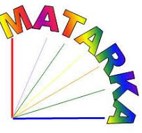Védett futóbogarak (Col.: Carabidae) előfordulása hazánk mezőgazdasági területein
Absztrakt
Hazánk különböző területein végzett vizsgálatok során 36 szőlő- és gyümölcsültetvényt, valamint 21 szántóföldi kultúrát vizsgáltunk. A kutatások során több mint 150 ezer futóbogarat határoztunk meg, melyek között 23 védett fajt találtunk. Kimutattuk, hogy a szőlő- és gyümölcsültetvényekben a legelterjedtebb és leggyakoribb faj a bőrfutrinka (Carabus coriaceus) volt, míg szántóföldjeink jellemző és gyakori faja az aranypettyes bábrabló (Calosoma auropunctatum). A védett fajok közül még a változó futrinka (Carabus scheidleri) fordul elő jelentős egyedszámban agrárterületeinken. Az általunk talált védett fajok mind a gyümölcsösben, mind a szántón szinte kizárólag a Calosoma-, Carabus-, és Cychrus-genuszok képviselői. Ezek zömmel olyan erdőlakó fajok, melyek a növényvédőszeres kezelésekre és az élőhelyüket érintő változásokra érzékenyen reagálnak, ezért leginkább erdei környezetbe telepített, környezetkímélő, vagy minimális növényvédelmi kezelésű, kisebb zavarásnak kitett, évelő kultúrákban találhatók. A védett futóbogarak populációinak megőrzéséhez az intenzív ültetvények helyett környezetkímélő, vagy minimális növényvédelmi kezelésű ültetvények kialakítását kell szorgalmazni.
Hivatkozások
Andersen, A. (1991): Carabidae and Staphylinidae (Col.) frequently found in Norvegian agricultural field. New data and review. – Fauna norvegica Series B 38: 65–76.
Anonymus (2009): A magyar mezőgazdaság és élelmiszeripar számokban. – Földművelésügyi és Vidékfejlesztési Minisztérium, Budapest pp. 30.
Bujáki, G., Kádár, F., Kárpáti, Z., Tóth, F. & Tréfás, H. (1997): Őszibúza futóbogár faunájának összehasonlítása az azt körülvevő élőhelyekével. – Növénytermelés 46: 313–319.
Faragó, S. (1990a): Vizsgálatok a szárnyasvad állati eredetű táplálékbázisáról mezőgazdasági környezetben Magyarországon I. A szárnyasvad tápláléka, a táplálékbázis vizsgálatok anyaga és módszere. – Erdészeti és Faipari Tudományos Közlemények 1989 (2): 153–192.
Faragó, S. (1990b): Vizsgálatok a szárnyasvad állati eredetű táplálékbázisáról mezőgazdasági környezetben Magyarországon II. Mosonszolnok (Kisalföld). – Erdészeti és Faipari Tudományos Közlemények 1989(2): 193–308.
Fazekas, J., Kádár, F. & Lövei, G. L. (1992): Comparison of ground beetle assemblages (Col.: Carabidae) of an abandoned apple orchard and the bordering forest. – Acta Phytopathologica et Entomologica Hungarica 27: 233–238. p.
Horvatovich, S. (1980): Vas megyei vörösherésekben élő futóbogarak (Col.: Carabidae) faunisztikai vizsgálata. – A Vas megyei múzeumok értesítője 13-14: 59–65.
Horvatovich, S. & Szarukán, I. (1986): Faunal investigation of ground beetles (Carabidae), in the arable soils of Hungary. – Acta Agronomica Hungarica 35 (1-2): 107–123.
Kádár, F., Hatvani, A., Kiss, J. & Tóth, F. (2004): Futóbogarak előfordulása őszibúza-táblában és táblaszegélyben (Coleoptera: Carabidae). – Növényvédelem 40: 53–59.
Kádár, F., Szél, Gy. & Faragó, S. (1998): Futóbogarak (Coleoptera: Carabidae) egy kisalföldi agrárterületen. – Növényvédelem 34: 3–10.
Kiss, J., Kádár, F., Tóth, F., Barth, R. & Hatvani, A. (1998): Predatory arthropods sampled in pitfall traps in winter wheat in northern Hungary. – Integrated control in Cereal Crops. IOBC Bulletin 21: 81–90.
Kiss, J., Kádár, F., Tóth, I., Kozma, E. & Tóth, F. (1994): Occurrence of predatory arthropods in winter wheat and in the field edge. – Ecologie 25: 127–132.
Kutasi, Cs. (2000): Futóbogarak (Coleoptera: Carabidae) a Pannonhalmi Tájvédelmi Körzetből. – Folia Musei Historico-naturalis Bakonyiensis 15: 93–100.
Kutasi, Cs. (2005): Futóbogár-együttesek (Coleoptera: Carabidae) szerkezetének vizsgálata gyümölcsültetvényekben. – Budapesti Corvinus Egyetem, Kertészettudományi Kar, Doktori értekezés, Budapest, 128 pp.
Kutasi, Cs., Markó, V. & Balog, A. (2004): Species composition of carabid (Coleoptera: Carabidae) communities in apple and pear orchards in Hungary. – Acta Phytopatologica et Entomologica Hungarica 3: 71–78.
Kromp, B. (1999): Carabid beetles in sustainable agriculture: a review on pest control efficacy, cultivation impacts and enhancement. – Agriculture, Ecosystems and Environment 74: 187-228.
Lövei, G. (1984): Ground beetles (Coleoptera: Carabidae) in two types of maize fields in Hungary. – Pedobiologia 26: 57–64.
Lövei, G. (1989): Antropogén élőhelyek futóbogáregyütteseinek szerkezete és táplálkozásbiológiájuk. – Kandidátusi értekezés, MTA Növényvédelmi Kutatóintézete, 131 pp.
Lövei, G. & Sárospataki, M. (1990): Carabid beetles in agricultural field in Eastern Europe. – In: Stork, N. E. (ed.): The Role of Ground Beetles in Ecological and Environmental Studies, Intercept, Andover, pp. 87–93.
Markó, V. & Kádár, F. (2005): Effects of different insecticide disturbance levels and weed patterns on carabid beetle assemblages. – Acta Phytopatologica et Entomologica Hungarica 40: 111–143.
Merkl, O. & Vig, K. (2009): Bogarak a Pannon régióban. – Vas Megyei Múzeumok Igazgatósága, Szombathely 494. pp.
Mészáros, Z. (szerk.) (1984a): Results of faunistical studies in Hungarian haize stands (Maize Ecosystem Research No. 16). – Acta Phytopathologica Academiae Scientiarum Hungaricae 19: 65–90.
Mészáros, Z. (szerk.) (1984b): Results of faunistical and floristical studies in Hungarian apple orchards (Apple Ecosystem Research No. 26). – Acta Phytopathologica Academiae Scientiarum Hungaricae 19: 91–176.
Scherney, F. (1959): Unsere Laufkäfer – Die Neue Brehm Bücherei, 245., A. Ziemsen Verlag, Wittemberg Lutherstadt, 80 pp.
Szeőke, K. (1993): A tarlóégetés hatása a gabonafutrinkára (Zabrus tenebrioides Goeze), szalmadarázsra (Cephus pygmaeus L.) és a predátor futóbogár- (Carabidae) faunára. – Növényvédelem 29: 11–15.
Szél, Gy., Kádár, F. & Faragó, S. (1997): Abundance and habitat preference of some adult-overwintering ground beetle species in crops in western Hungary (Coleoptera: Carabidae). – Acta Phytopathologica et Entomologica Hungarica 32: 369–376.
Szél, Gy. & Kutasi, Cs. (2003): Tihanyi élőhelyek bogárfaunisztikai vizsgálata. – Folia Musei Historico-naturalis Bakonyiensis 20: 77–106.
Szél, Gy. & Kutasi, Cs. (2005): Influence of land-use intensity on the ground beetle assemblages (Coleoptera: Carabidae) in Central Hungary. – European Carabidology 2003. Proceedings of the 11th European Carabidologists’ Meeting, Arhus July 2003, 305–312.
Turin, H., Penev, L., Casale, A., Arndt, E., Assmann, Th., Makarov, K., Mossakowski, D., Szél, Gy. & Weber, F. (2003): Chapter 5. Species account. – In: Turin, H., Penev, L. & Casale, A. (eds.): The genus Carabus L. in Europe. A synthesis. Fauna Europaea Evertebrata. No 2. Pensoft, Sofia-Moscow, pp. 151–280.






